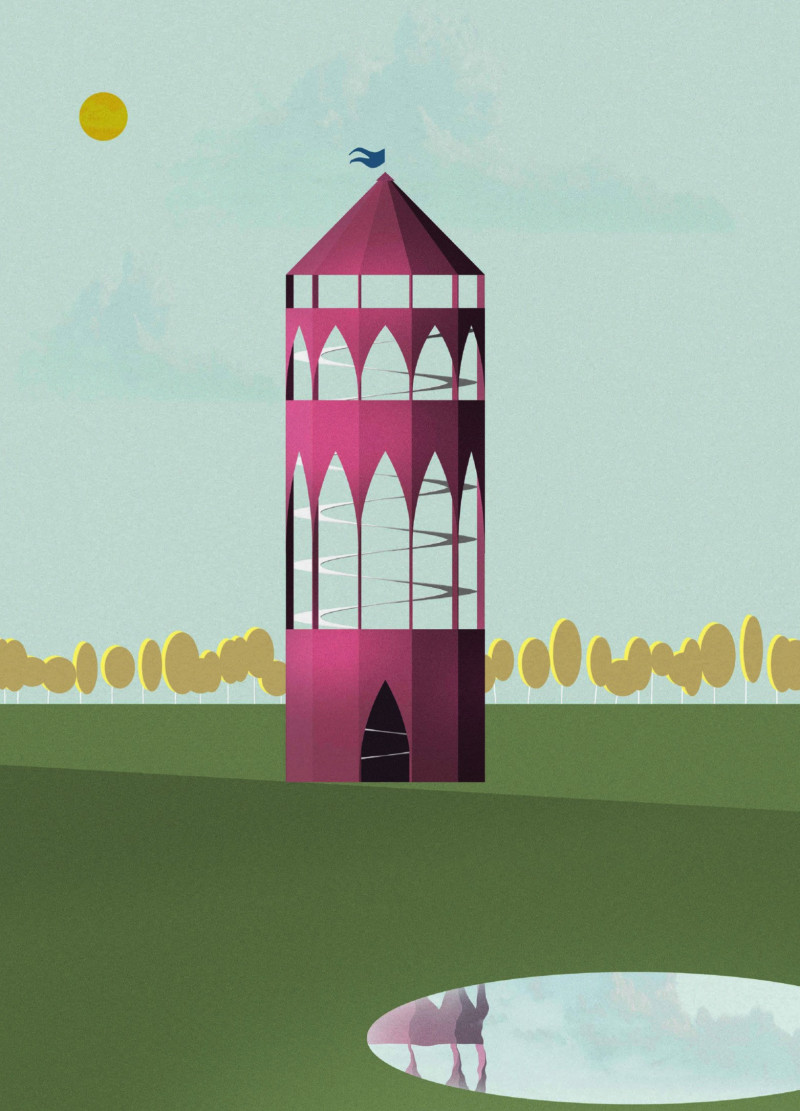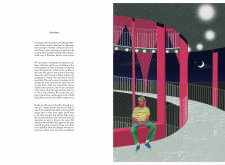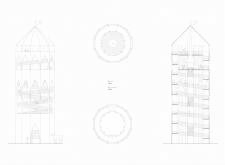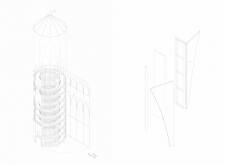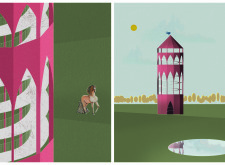5 key facts about this project
The Kurgi Observation Tower is located within a Biosphere Reserve, designed to provide visitors with a unique experience that connects architecture to the natural environment. The design is influenced by Gothic architectural elements, particularly its emphasis on height and vertical lines. It serves as a viewpoint for individuals to observe the beauty of the surrounding landscape, creating a blend of built form and natural setting.
Vertical Movement
A continuous ramp is a central feature of the tower, guiding visitors as they ascend through the structure. This ramp allows for easy movement to higher levels while encouraging exploration. Each step along the ramp offers a different experience, enabling visitors to take in various views of the landscape. The thoughtful design makes it accessible and engaging, inviting people to discover the space at their own pace.
Open Views
Large windows are carefully positioned to provide 360° views of the natural park. These windows create a strong connection between the inside of the tower and the outside world. As visitors look through them, they can enjoy the scenic beauty surrounding the tower while remaining sheltered within the space. This relationship highlights the importance of nature in the overall design and enhances the experience of being in the tower.
Structural Design
The structure consists of a dodecagonal mesh of steel pillars that offer strength and support. This geometric form is not only functional but also visually appealing, reinforcing the sense of height associated with Gothic design. The pillars connect through L-shaped profiles, ensuring that the ramp is securely supported. This careful attention to structural integrity makes the design both sturdy and efficient.
Material Use
Folded copper sheets and opaque copper panels are used throughout the tower, contributing to its overall character. These materials add visual interest while providing structural support. As time passes, the copper will oxidize, changing color and texture. This natural process allows the tower to evolve, creating a lasting connection with its environment as both architecture and nature continue to change together.


